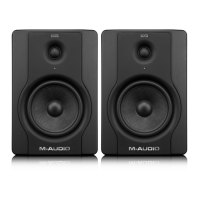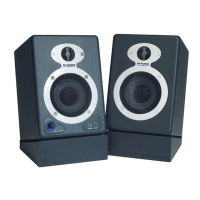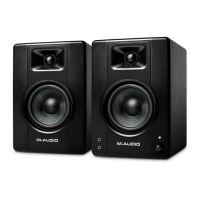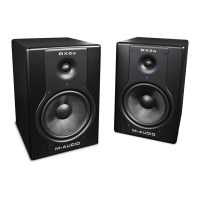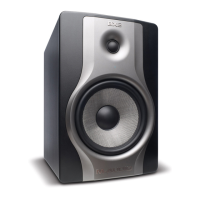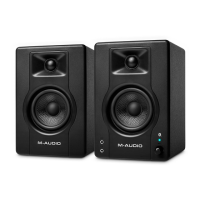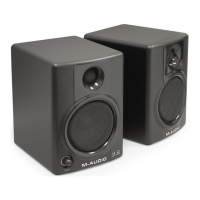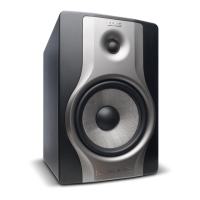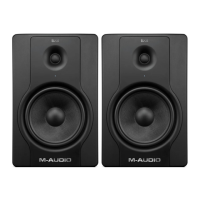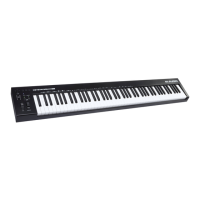Chapter 3: Setup and Operation 11
Connecting Audio
This section explains how to make analog and
digital audio connections to DSM3 speakers.
Connecting Analog Inputs
To connect an analog source:
1 Do any of the following:
• Connect a balanced XLR cable to the
XLR In connector on the back panel of the
speaker.
• Connect a balanced 1/4-inch balanced TRS
cable to the TRS In connector on the back
panel of the speaker.
2 Connect the other end of the cable to the an-
alog audio source (for example, an analog out-
put from your monitoring system).
Connecting Digital Inputs
DSM3 speakers accept digital input at the
AES/EBU Digital Input (XLR connector) and the
S/PDIF Digital Input.
Only one digital input connector (AES/EBU In
or S/PDIF In) may be active at a time. If the
speaker receives digital input from more than
one digital connector, digital lock may not be
achieved and noise or distortion may result.
Connecting Digital Sources
AES/EBU and S/PDIF digital protocols carry two
channels of audio (left and right). If you are us-
ing a digital source, you can connect it to either
the AES Digital In or the S/PDIF In of one of the
DSM3 speakers. (It does not matter which
speaker is connected to the source.)
Analog input section
If you need to connect an unbalanced ana-
log source, see “Analog Inputs” on page 4.
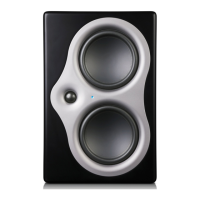
